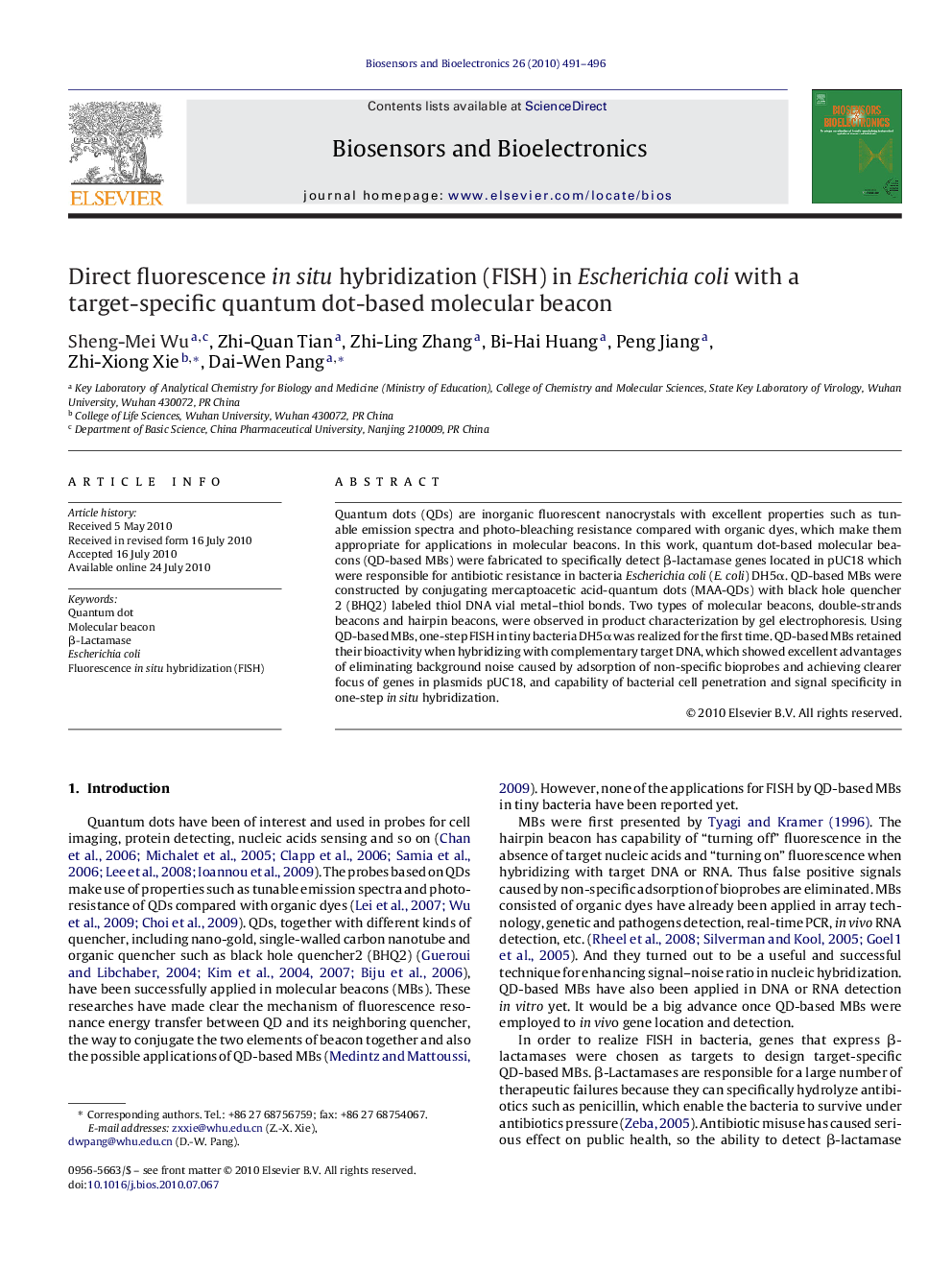| Article ID | Journal | Published Year | Pages | File Type |
|---|---|---|---|---|
| 868561 | Biosensors and Bioelectronics | 2010 | 6 Pages |
Quantum dots (QDs) are inorganic fluorescent nanocrystals with excellent properties such as tunable emission spectra and photo-bleaching resistance compared with organic dyes, which make them appropriate for applications in molecular beacons. In this work, quantum dot-based molecular beacons (QD-based MBs) were fabricated to specifically detect β-lactamase genes located in pUC18 which were responsible for antibiotic resistance in bacteria Escherichia coli (E. coli) DH5α. QD-based MBs were constructed by conjugating mercaptoacetic acid-quantum dots (MAA-QDs) with black hole quencher 2 (BHQ2) labeled thiol DNA vial metal–thiol bonds. Two types of molecular beacons, double-strands beacons and hairpin beacons, were observed in product characterization by gel electrophoresis. Using QD-based MBs, one-step FISH in tiny bacteria DH5α was realized for the first time. QD-based MBs retained their bioactivity when hybridizing with complementary target DNA, which showed excellent advantages of eliminating background noise caused by adsorption of non-specific bioprobes and achieving clearer focus of genes in plasmids pUC18, and capability of bacterial cell penetration and signal specificity in one-step in situ hybridization.
